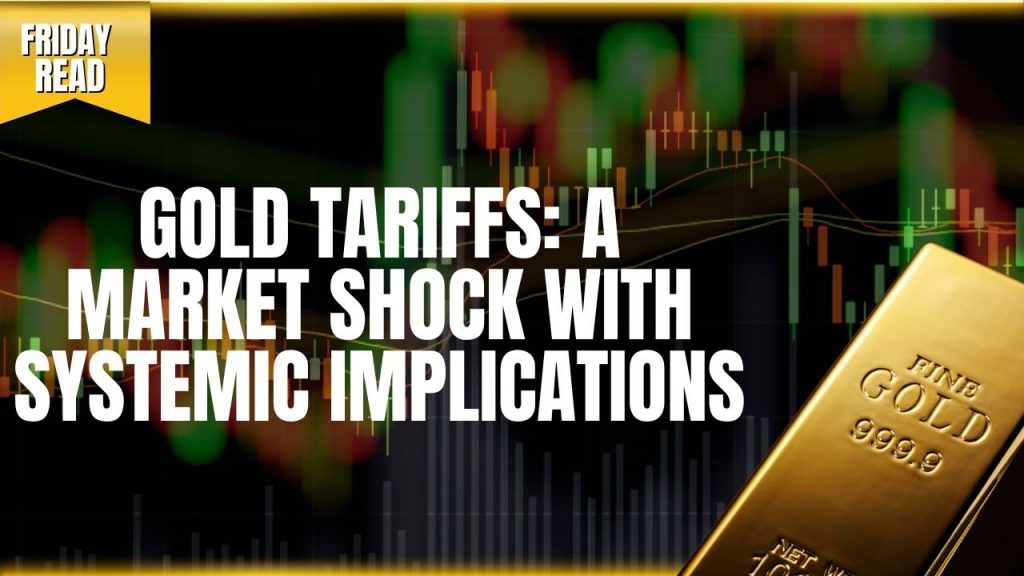
Earlier, the Financial Times reported a development that has surprised the international gold market: U.S. Customs & Border Protection (CBP) has ruled that one-kilo and 100-ounce gold bars, the standard units for delivery on New York’s COMEX futures exchange, are now subject to import duties. The ruling reclassifies these bars under a tariffable customs code, triggering a record intraday spike in U.S. gold futures and a rare triple-digit premium over London spot prices. Switzerland, the world’s gold refining hub and a major supplier of kilobars to the U.S., is at the centre of this disruption.
This is not just a technical change. The implications touch on global trade flows, the mechanics of futures markets, and the credibility of the dollar as the anchor of the financial system. Over the coming days, we will be monitoring legal clarifications from CBP and responses from exchanges, but the immediate market reaction underlines the seriousness of the issue.
The Classification Conundrum
The CBP’s letter states that kilo and 100-ounce bars are to be treated as “semi-manufactured” rather than “unwrought” bullion. The former is tariffable under current policy, while the latter had been understood to be exempt. This interpretive change lands squarely on the bar sizes most entwined with COMEX delivery. Tariffs applied to a product that also serves as a settlement asset in a major derivatives market magnify the impact.
Swiss Industry Response
The Swiss Precious Metals Association notes that the 39% tariff applies globally, not just to Swiss exports. While supporting regulatory clarity, it warns the measure risks disrupting international flows.
Is the USA about to monetise its gold? Here’s how.
Error or Intent?
Some believe this may be a mistake. Classifying widely used wholesale bars as “semi-manufactured” interrupts the smooth functioning of a market known for efficiency. If the move is deliberate, a structural premium for “loco New York” bars relative to London and Asia is likely, reducing COMEX’s relevance for hedging and price discovery. Market share could shift toward other settlement venues over time.
Futures Market Plumbing at Risk
The issue is not confined to gold. When governments alter the cost or movement of deliverables in physically settled contracts, basis spreads widen, hedging becomes less efficient, and liquidity may shift elsewhere. This precedent could introduce policy risk premia into other commodity contracts if classification or tariff policy changes unexpectedly.
Download Your Essential Checklist
Implications for the Dollar
The dollar’s influence extends beyond government securities to dollar-denominated settlement systems. If deliverables within those systems are politicised, users may gradually shift to non-U.S. benchmarks, eroding credibility over time.
Investor Guidance
This episode reinforces the case for holding allocated, physically held gold. Jurisdictional diversification can reduce policy and logistics risk. Physical metal does not reclassify itself overnight, and in times of policy friction, its strategic value increases.
Whether this decision is reversed or entrenched, the message is clear: policy risk now sits inside the deliverable of a benchmark U.S. futures contract. This is bigger than gold, and it is a reminder that even an unassuming asset can become central to global finance when the rules change.
Buy Gold Coins

Buy gold coins and bars and store them in the safest vaults in Switzerland, London or Singapore with GoldCore.
Learn why Switzerland remains a safe-haven jurisdiction for owning precious metals. Access Our Most Popular Guide, the Essential Guide to Storing Gold in Switzerland here.
Receive Our Award Winning Market Updates In Your Inbox – Sign Up Here






